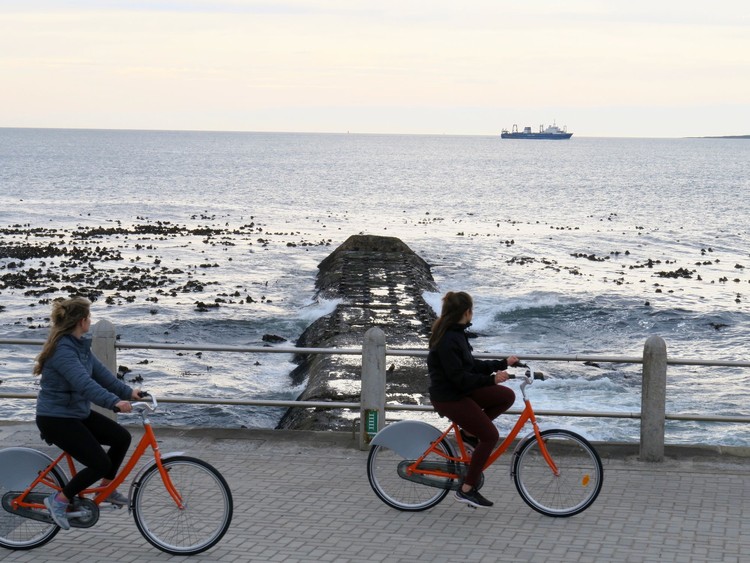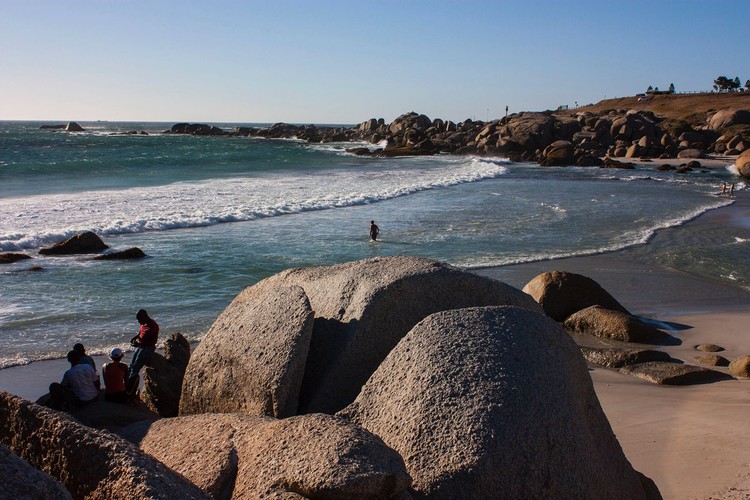Cape Town ordered to hold public hearings on sewage being pumped into the sea
Environment minister criticises City’s previous lack of engagement
The Green Point marine outfall is one of three in Cape Town through which millions of litres of sewage are pumped out to sea daily. The City has been ordered to embark on a public participation process over the permits required for the operation of these outfalls. Archive photo: Steve Kretzmann
- Early this year, a number of organisations appealed to the Department of Forestry, Fisheries and the Environment over the granting of discharge permits to the City of Cape Town for three outlets that pump sewage into the sea.
- In her appeal decision, Minister Barbara Creecy ordered the City to engage in public hearings and criticised the City for its lack of engagement over the permit process.
- The City has now started public hearings at a “pre-briefing” on Wednesday.
After it was ordered to do so by the environment minister, the City of Cape Town has now started public hearings on three marine outfalls it operates. These pump about 28 million litres of sewage out to sea every day, according to reports commissioned by the City. The only treatment this sewage receives is to be macerated and pumped through a 3mm grid to remove grit and solids. It is then released into the ocean approximately 1.5km from shore in Green Point, Camps Bay and Hout Bay.
Mayco member for water and sanitation Zahid Badroodien announced the start of a 60-day public hearing period at a pre-briefing held at Camps Bay High school on Wednesday evening. This comes after the City failed to notify the public it had been granted the permits in 2019 for Hout Bay, in December 2022 for Green Point, and in January for Camps Bay. In total, the three permits allow for a maximum 56-million litres of sewage to be pumped out to sea every day.
The City also applied for a permit to discharge brine at the Green Point outfall in line with the possible development of a desalination plant.
The City had applied for the discharge permits in 2014, but it took years for the first of the three permits to be issued by the Department of Forestry, Fisheries and the Environment (DFFE), due to the legislation on outfall permits being shifted from the National Water Act under the Department of Water and Sanitation (DWS) to the Integrated Coastal Management Act under the DFFE.
In the meantime, the outfalls had been operating under a general authorisation issued by the DWS, according to previous correspondence with the City.
Lack of engagement
Following appeals to the granting of the permits submitted by a number of organisations in January and February, DFFE minister Barbara Creecy, in her appeal decision of 10 June, stated the City failed to notify interested parties that the permits had been granted or to make a public announcement.
This impinged on the public’s right to appeal. Appeals are supposed to be lodged within 30 days of the appellant being notified of the decision, or within 60 days of the decision being announced if the appellant is not notified of the decision.
Creecy stated the public only became aware of the issuing of the permits after the National Sea Rescue Institute (one of the appellants) ask the City in January if the outfall permits had been issued.
In deciding whether to consider the appeals, Creecy noted it was her view “that the CoCT [City of Cape Town] ought to have announced the decision once it was issued so that interested persons were advised of their right to appeal”.
Another factor in deciding to consider the appeals was that the discharge of sewage through the outfalls was “historic” and “continuous in nature”, thus “no prejudice (or limited prejudice) will be suffered by the CoCT”.
The outfalls have been in operation for decades under various renewable licensing conditions.
Loss of trust
A number of the 20 people attending the pre-briefing on Wednesday were sceptical of the City’s public participation process.
Badroodien said the City was going beyond the minimum requirements and extending the public hearings to include five coastal sewage treatment plants that released treated effluent into the ocean. These were Mitchells Plain, Llandudno, Oudekraal, Simon’s Town, and Miller’s Point.
Former Camps Bay and Clifton Ratepayers’ Association management committee member and Bay of Sewage member Byron Herbert said this appeared to be a way to cloud the issue since the marine outfalls, unlike the sewage plants, did not treat the sewage before it was pumped into the ocean.
Badroodien denied any ill intent.
Marine conservation photographer Jean Tresfon, whose aerial photographs of plumes of sewage released from the outfalls have created public outcry, told Badroodien trust had been lost by the previous water and sanitation mayco member; Badroodien and his team would have to work hard to regain it.
Tresfon said he was part of the public participation process in 2015, but neither he nor anyone he knew who was involved were notified when the permits were granted.
He said there had been almost 3,000 objections at the time “but no one got a single reply”.
It also appeared Badroodien and director of water and sanitation bulk services, Mike Killick, had not properly read Creecy’s appeal decision. Neither had knowledge of brine discharge also being part of the Green Point outfall permit application, nor that Creecy had stipulated one of the public participation meetings had to take place in Camps Bay, which was not on the list of venues presented.
Badroodien and Killick were, however, respectful of the criticism.
Badroodien said a study on the feasibility of treating the sewage before pumping it to sea, or pumping it to other land-based treatment works, would be published toward the end of the year.
Grounds for appeal
Among the grounds for appealling the granting of the discharge permits were that the sewage was being pumped into a marine protected area; it contravened the right to a healthy environment as provided for the Bill of Rights; there was no evidence of a proper public participation process or risk assessment; and the discharge was not in the interests of the whole community.
Creecy noted the City did advertise its applications for the permits and invited comment between 1 June and 10 July 2015 – four years before the Hout Bay permit was issued and seven-and-a-half years before the permits for Camps Bay and Green Point were issued.
She said the DFFE then asked for further information, which was provided in the form of various reports. However, these were not made available for public comment because the public participation process had closed.
Additionally, she stated it was unclear where and when the City’s notices inviting public comment had been placed.
This led her to the view “that any public participation process that has been conducted is inadequate, outdated and should be redone to give effect to the right to just administrative action”.
She said the granting of the permits “have potentially far-reaching consequences because the discharge of sewage into the ocean can have significant impacts on the environment and public health”.
“It is therefore essential that the public have an opportunity to provide input and feedback on these decisions.”
Creecy then instructed the City to hold a fresh public participation process, which included at least three public meetings in Green Point, Camps Bay, and Hout Bay. This needed to happen at least 30 days after notices of the permit applications, and where details of the relevant information could be found, were posted in newspapers and at public buildings.
On Wednesday, Badroodien said residents could comment or object to the marine outfalls through the City’s have your say platform. He said notices of the public hearings were also being placed in newspapers and at public buildings.
The beauty of Camps Bay is world-renowned, but it is also the site of one of three marine outfalls through which the City of Cape Town pumps millions of litres of sewage out to sea every day. Archive photo: Steve Kretzmann
Support independent journalism
Donate using Payfast

Don't miss out on the latest news
We respect your privacy, and promise we won't spam you.
Letters
Dear Editor
Thanks for this good article.
Just one correction - the outfall discharge point at Camps Bay is only 600m from Maiden's Cove.
(You can measure this on Google Earth, if you type in the outfall coordinates, as per the permit, which are 33°56'42.68"S, 18°21'54.62"E)
We still need to calculate the Hout Bay discharge point to shore too, but we suspect it's similarly close. The figure supplied by the city are the length of the pipe from the pump stations, not the actual distance to shore...
© 2023 GroundUp. This article is licensed under a Creative Commons Attribution-NoDerivatives 4.0 International License.
You may republish this article, so long as you credit the authors and GroundUp, and do not change the text. Please include a link back to the original article.
We put an invisible pixel in the article so that we can count traffic to republishers. All analytics tools are solely on our servers. We do not give our logs to any third party. Logs are deleted after two weeks. We do not use any IP address identifying information except to count regional traffic. We are solely interested in counting hits, not tracking users. If you republish, please do not delete the invisible pixel.


